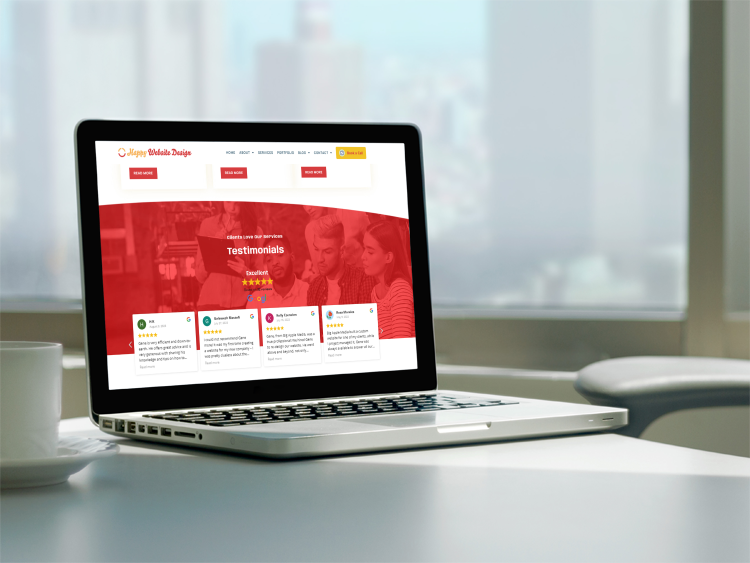Produce a Balanced Online Experience With Holistic Internet Design
In today's electronic landscape, developing a balanced online experience through holistic internet style is crucial for meeting the diverse needs of users. By focusing on access and straightening material method with user preferences, companies can substantially enhance involvement.
Recognizing Alternative Web Style
This approach thinks about not just visual aspects however additionally functionality, usability, and the emotional effect of the internet site on its individuals. By viewing a web site as an interconnected ecosystem, developers can make certain that every component-- visual design, web content, navigating, and interactivity-- functions sympathetically to fulfill user needs.
Integrating a holistic point of view includes comprehending the target market and their certain needs, choices, and habits (web design consulting services). It requires an analysis of how users communicate with different elements of the site and how these interactions affect their general experience. This technique likewise thinks about the wider context in which the site operates, consisting of brand identification, advertising approaches, and competitive landscape

Key Concepts of Customer Experience
At the core of efficient website design exists a deep understanding of vital principles of individual experience (UX), which offer as the foundation for developing user-friendly and interesting electronic settings (web design consulting services). These principles assist designers in crafting user interfaces that align with user demands and assumptions

Another substantial principle is feedback, guaranteeing that customers are informed concerning their communications. Whether via aesthetic cues or alerts, comments strengthens a sense of control and contentment. Additionally, the concept of hierarchy determines that details needs to be organized practically, directing customers with content properly.
Finally, emotional layout plays an essential duty in UX. By evoking positive feelings through looks and interactions, developers can develop unforgettable experiences that foster individual loyalty. By sticking to these concepts, internet designers can develop all natural experiences that reverberate with individuals and satisfy their purposes.
Importance of Availability
Access is a crucial facet of website design that makes certain all customers, no matter their capacities or disabilities, can engage with electronic content successfully. By focusing on accessibility, web designers create inclusive settings that deal with diverse individual requirements, boosting total customer experience.
An accessible website abides by established guidelines, such as the Internet Content Accessibility Standards (WCAG), which advise practices like supplying text alternatives for non-text material, ensuring sufficient color comparison, and allowing keyboard navigating. These methods not just offer users with handicaps, such as aesthetic or auditory impairments, but additionally profit other customer groups, including those with situational constraints or older grownups.
Additionally, the value of availability prolongs past honest considerations; it additionally affects service outcomes. An inclusive website can get to a more comprehensive audience, inevitably causing raised involvement and conversions. Additionally, access conformity lowers the threat of lawful effects connected to discrimination.
Incorporating access into website design fosters a feeling of area, where all people feel valued and suited. web design consulting services. By embracing this concept, developers contribute to a more fair electronic landscape, making certain that every person has the chance to access and gain from online resources
Integrating Web Content Approach
Producing an inclusive digital atmosphere naturally causes the necessity of a durable content technique that lines up with customer needs. A reliable content strategy offers as the backbone of holistic website design, making certain that information is not only obtainable yet additionally engaging and relevant. It needs a deep understanding of the target market, including their preferences, behaviors, and prospective barriers to accessibility.
To integrate a material technique successfully, companies need to focus on user-centric content production. This can be attained via comprehensive target market research study, which informs the sorts of material that will resonate with users. In addition, content needs to be structured rationally, using clear headings, bullet points, and succinct language to boost readability.
Collaboration across groups-- style, growth, and material-- is important to guarantee that the material technique is cohesively carried out. Regular audits of web content performance will certainly help in refining strategies, making sure the web content continues to be fresh and aligned with customer expectations. Incorporating multimedia aspects can improve individual communication, catering to varied understanding designs while promoting inclusivity. By prioritizing a cohesive web content approach, companies can develop a balanced online experience that promotes engagement and access for all individuals.

Gauging Success and Engagement
While a well-executed content approach creates the structure of alternative website design, determining success and interaction is critical for assessing its efficiency and assisting future improvements. Secret performance indicators (KPIs) such as web page sights, bounce prices, and average session period provide quantitative insights right into individual actions. These metrics highlight which web content reverberates most with individuals and where potential rubbing factors might exist.
Furthermore, qualitative steps, such as individual feedback and studies, can offer deeper insights into holistic web design individual fulfillment and engagement levels. Tracking social media sites interactions and conversion rates additionally helps gauge the efficiency of material in driving preferred activities, whether that be acquisitions, sign-ups, or information requests.
Utilizing devices like Google Analytics, heatmaps, and A/B screening can enhance understanding of user interaction patterns and choices. This information makes it possible for web developers and material planners to repeat on their layouts, making certain that the on-line experience continues to be user-centered and aligned with company objectives.

Conclusion
Finally, a well balanced online experience with alternative website design necessitates the integration of aesthetics, performance, and usability. By focusing on user needs and ease of access, designers can develop interconnected ecosystems that boost engagement and satisfaction. A well-aligned content technique additionally adds to a natural customer experience, while consistent responses systems are important for fostering loyalty. Inevitably, this thorough strategy not just boosts user complete satisfaction however also reinforces brand name identification in a significantly competitive digital landscape.